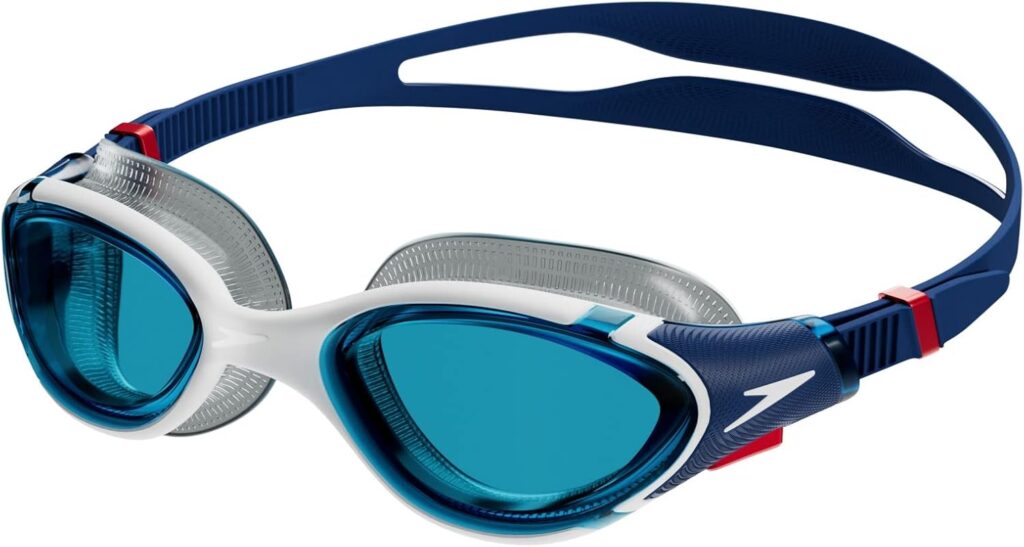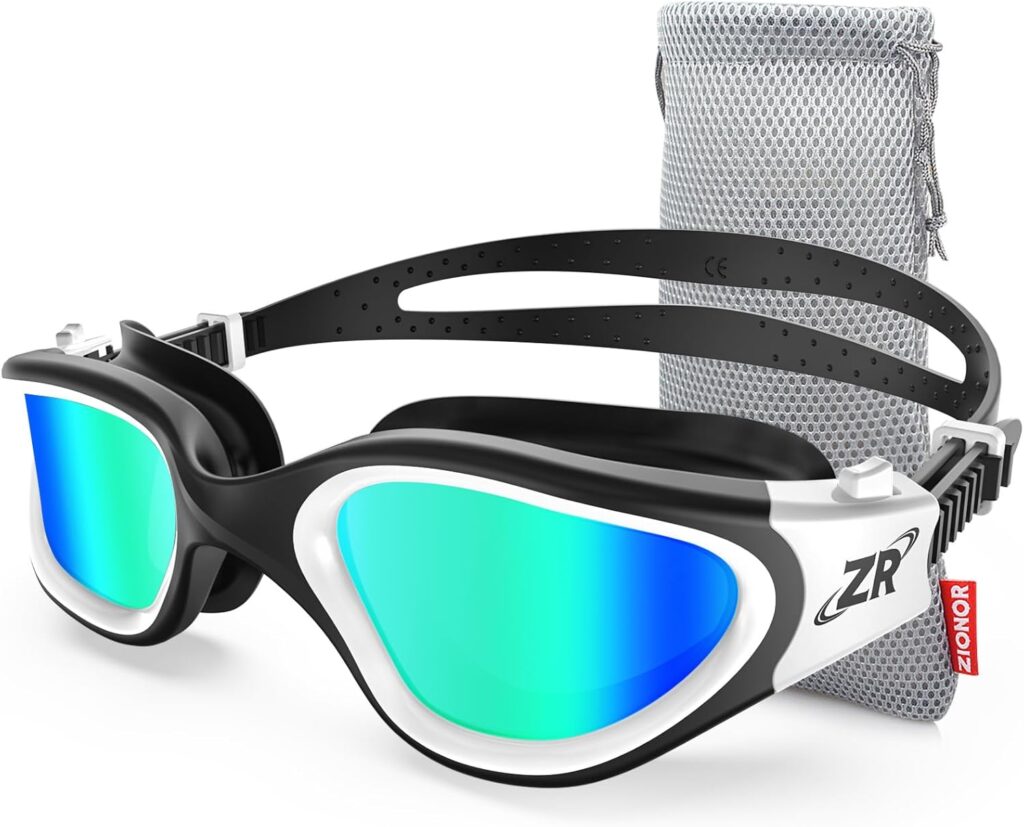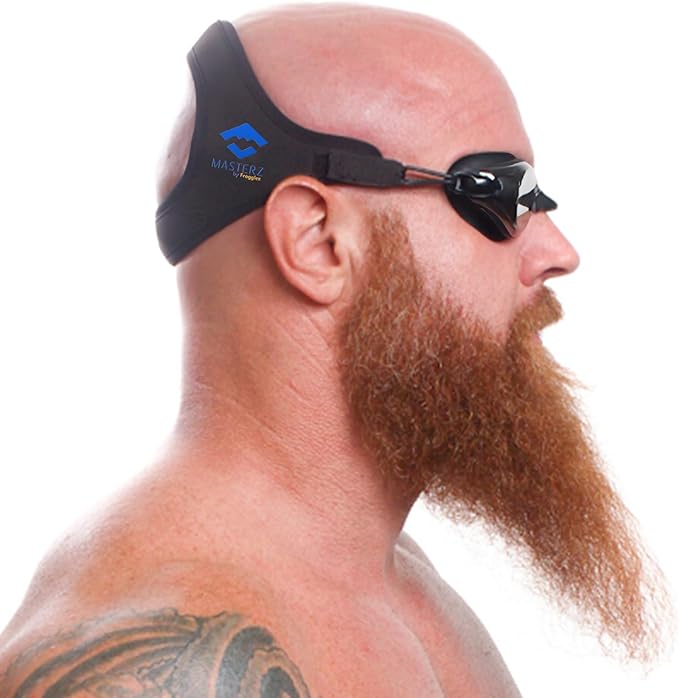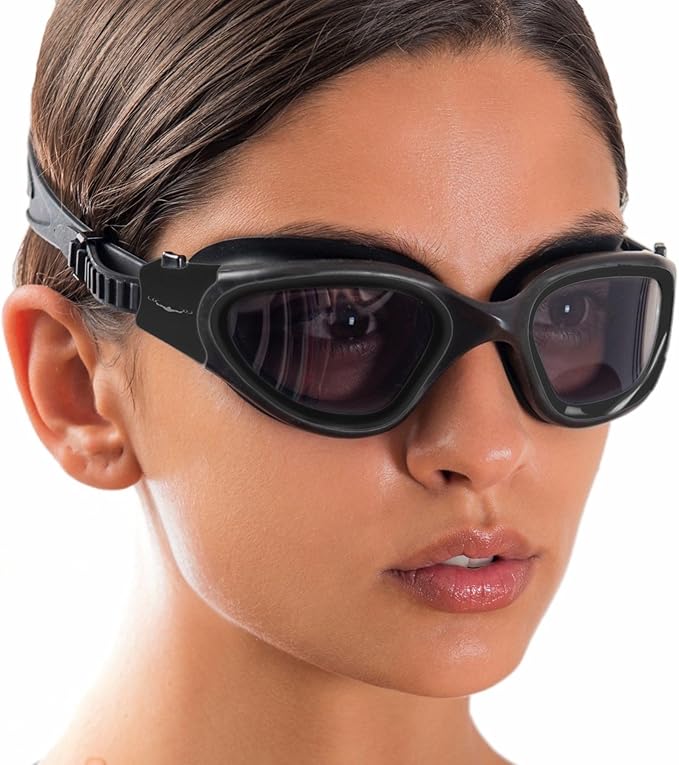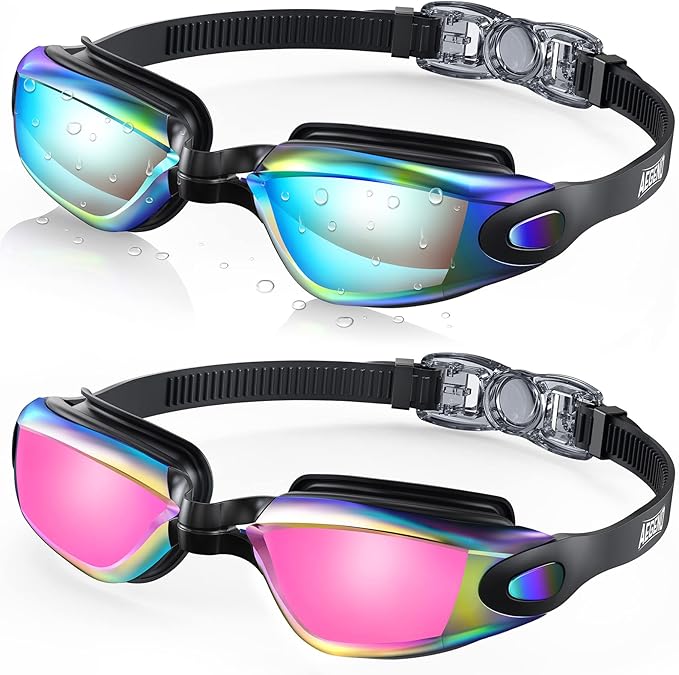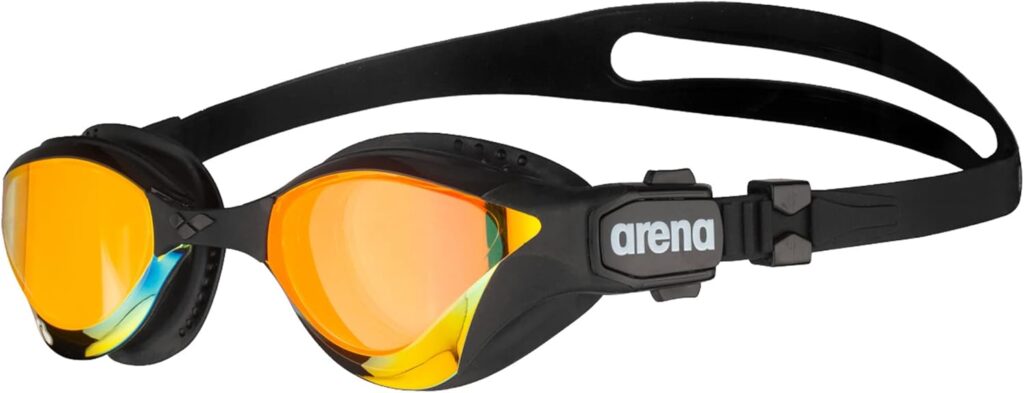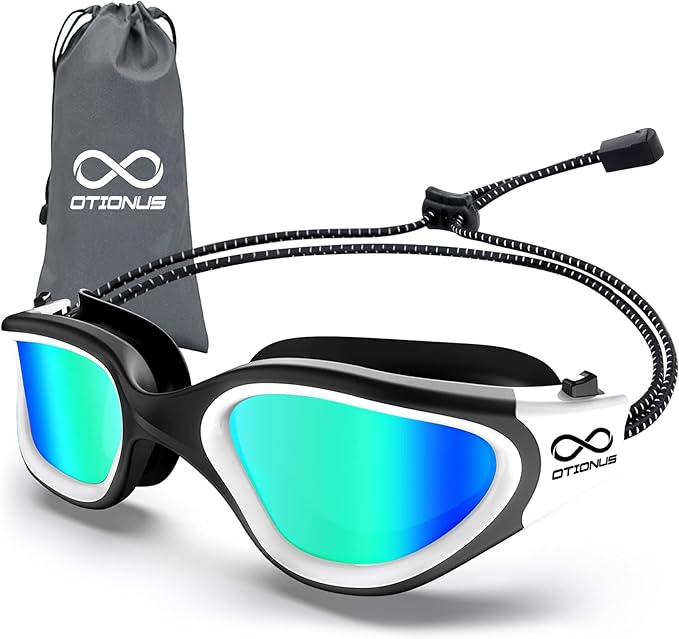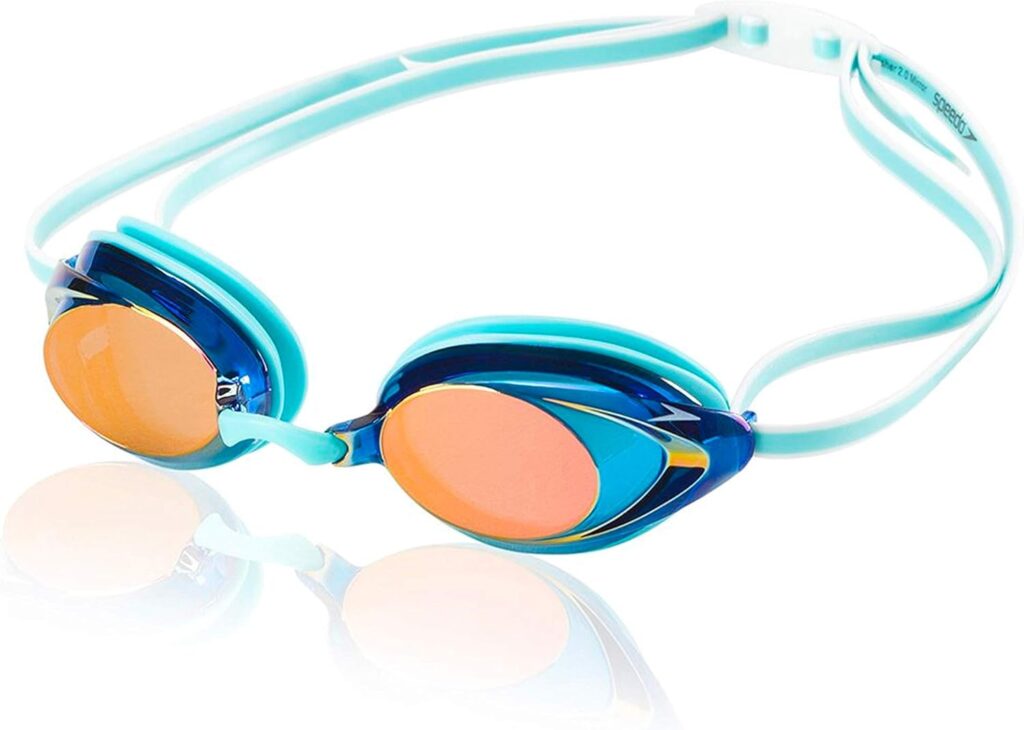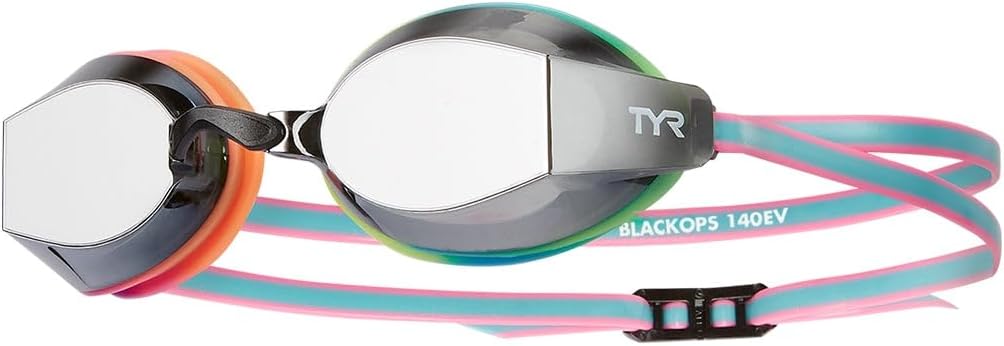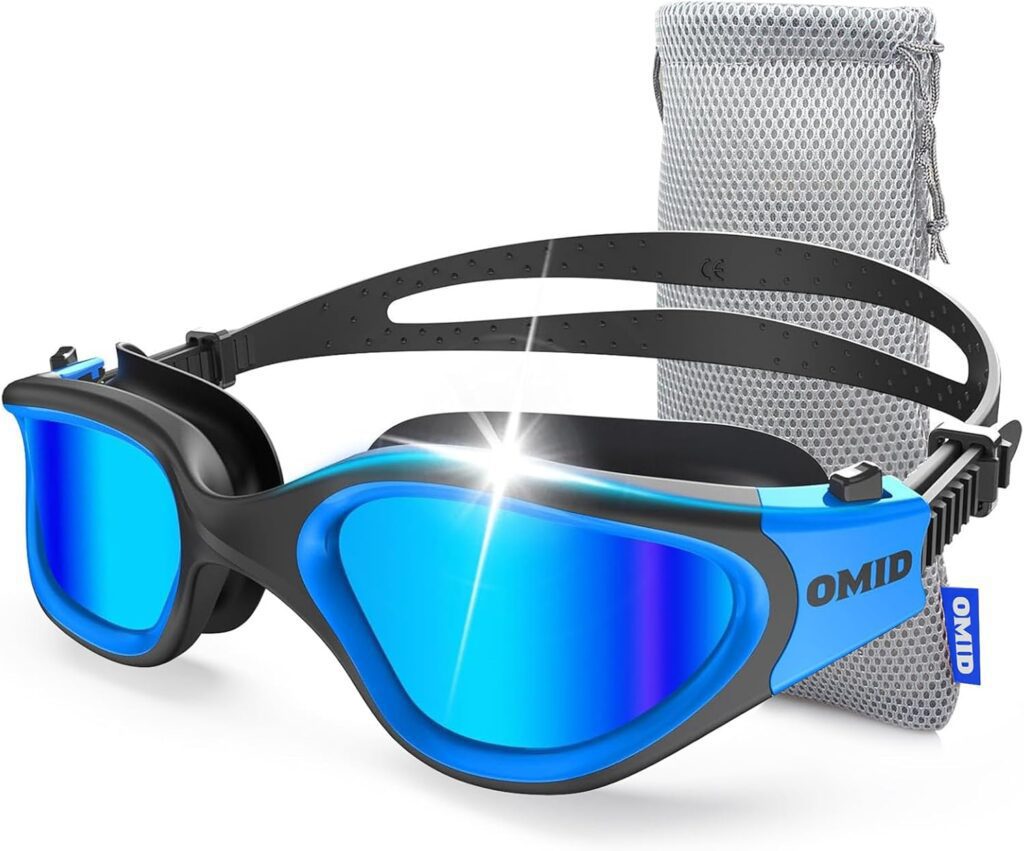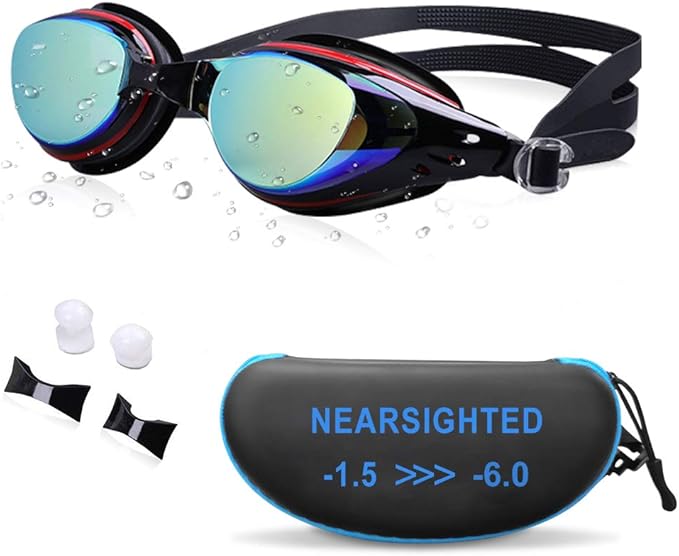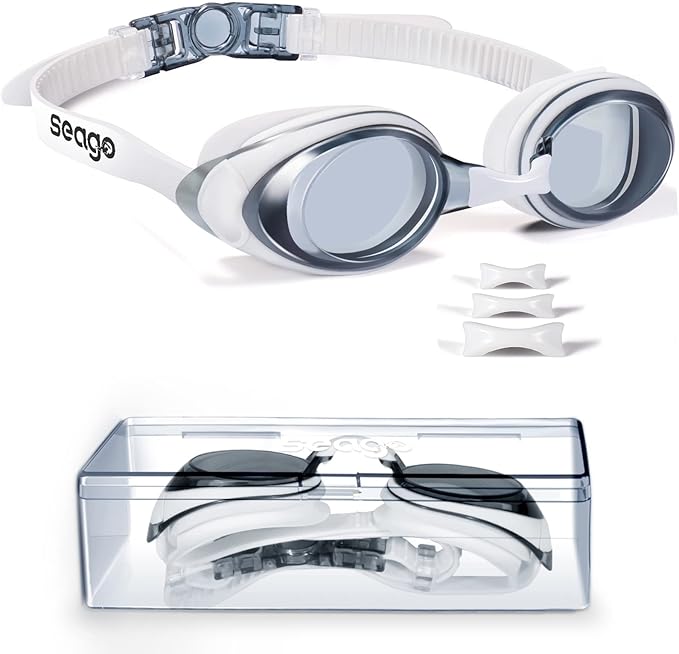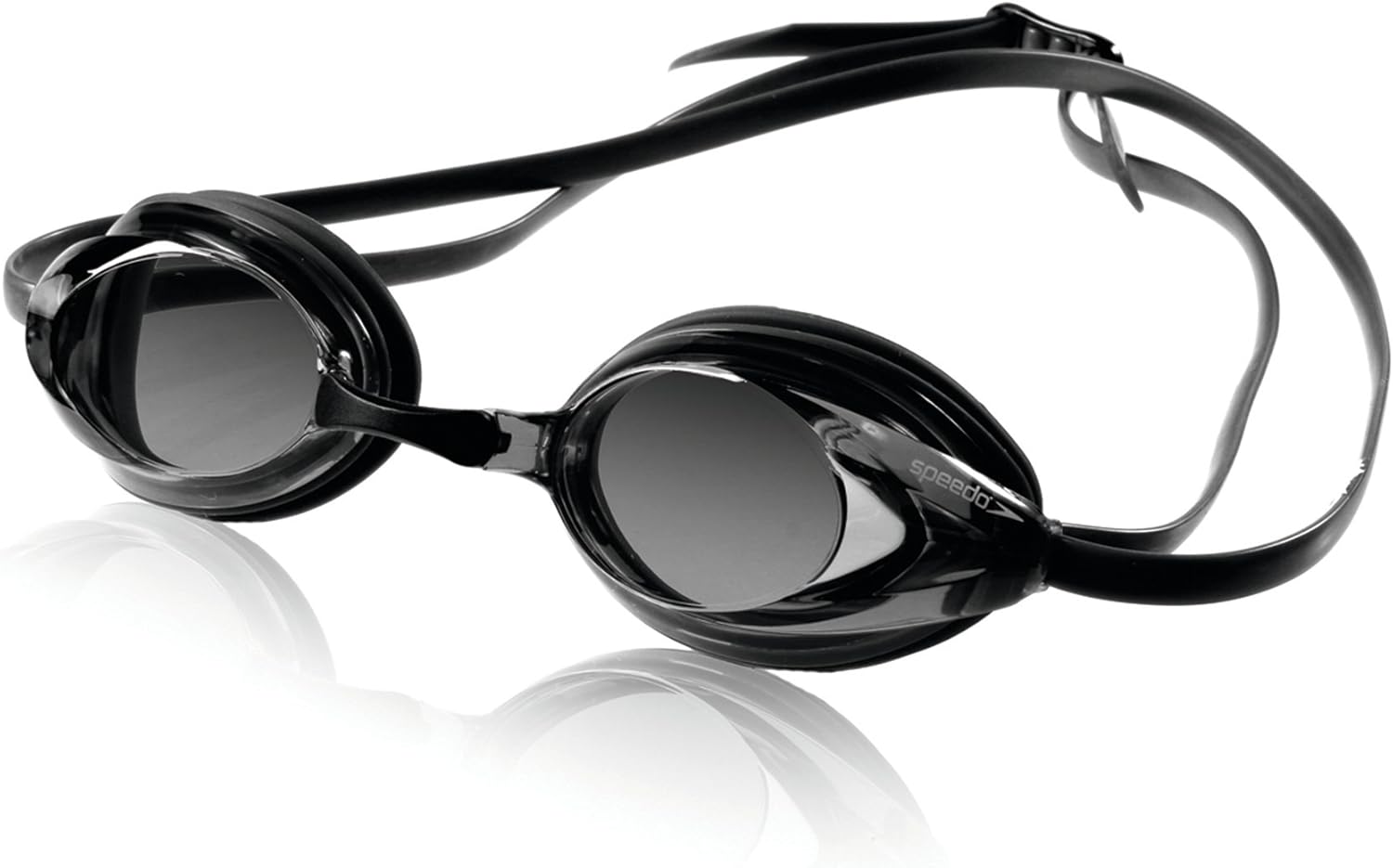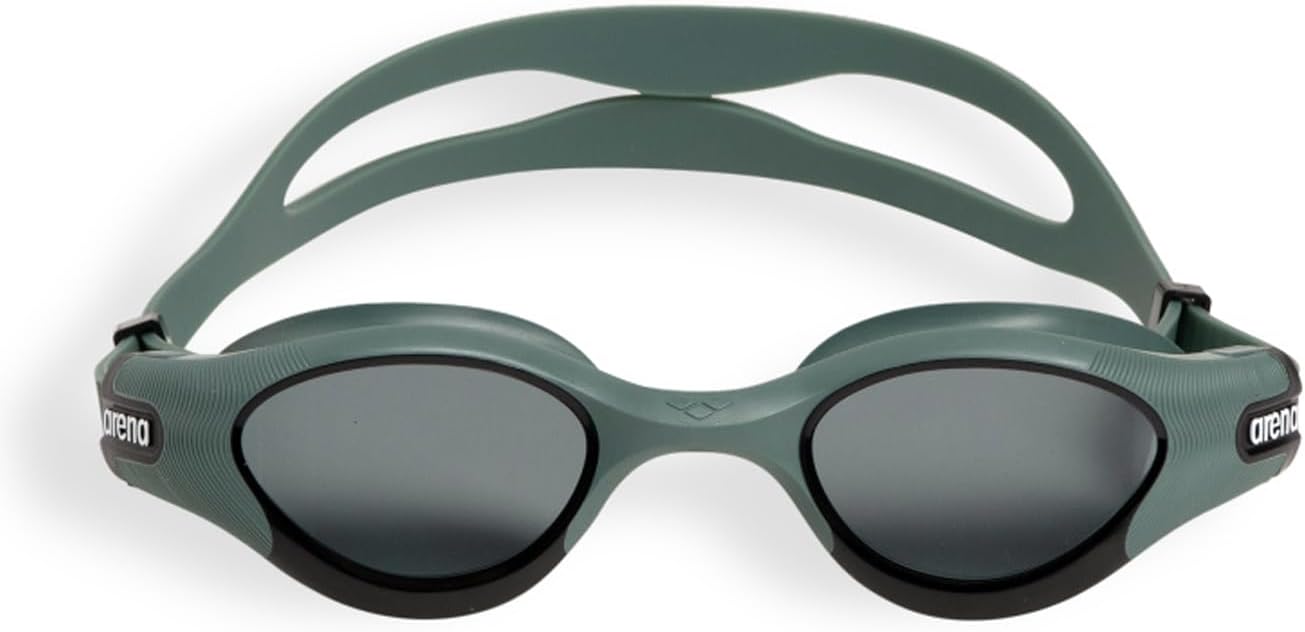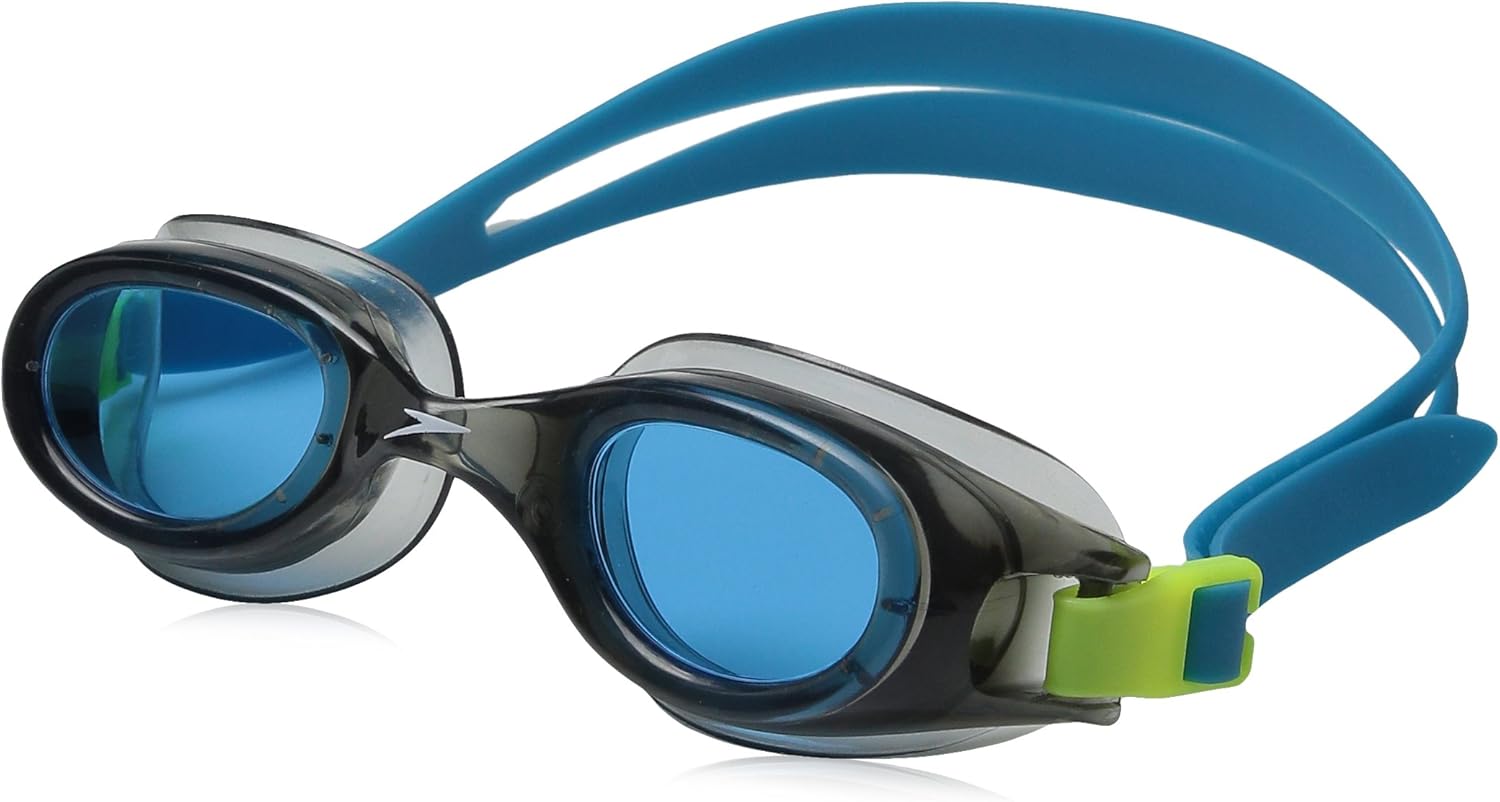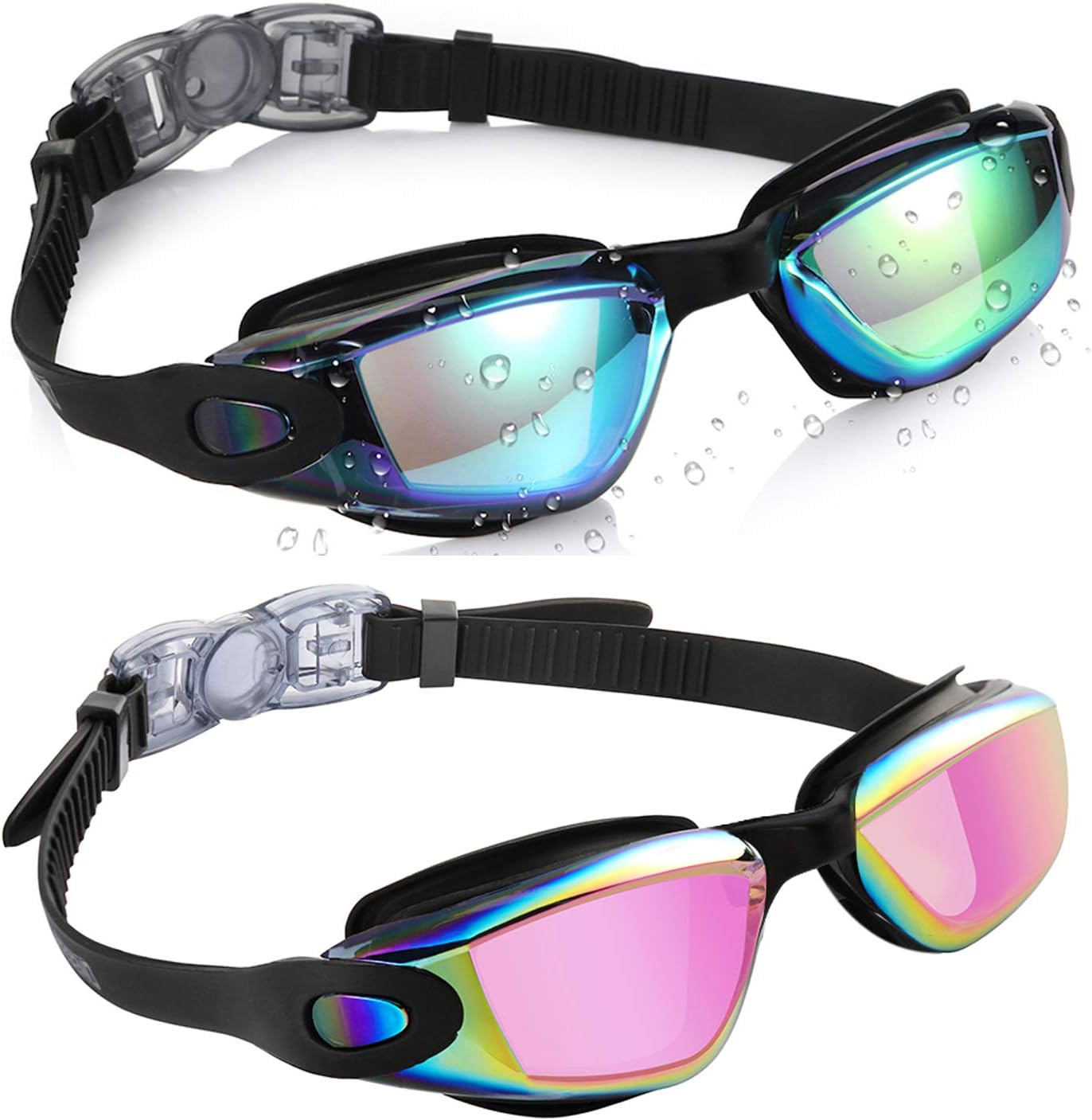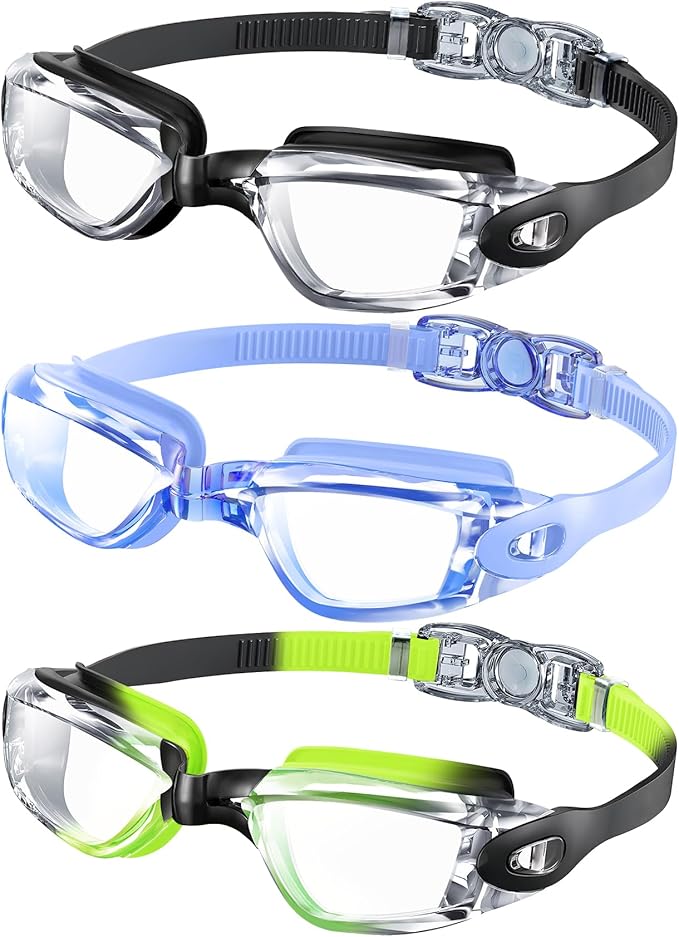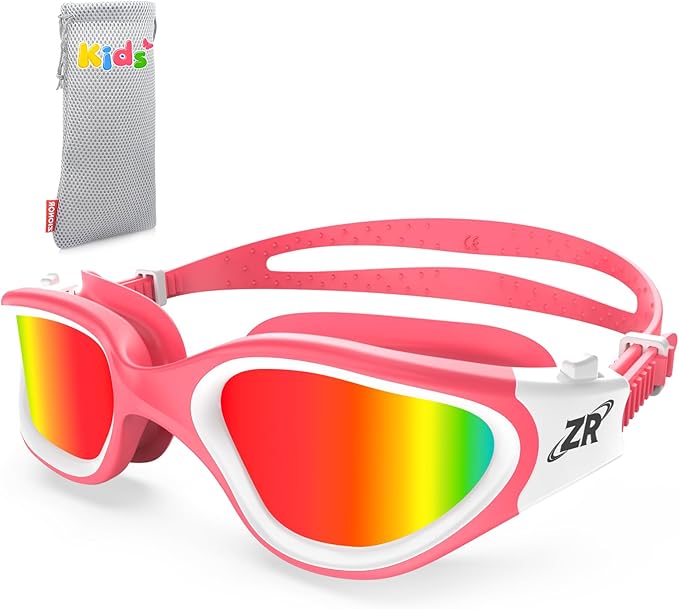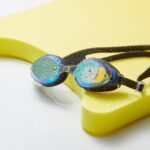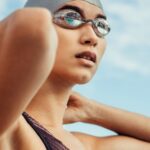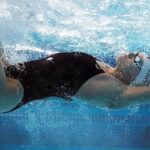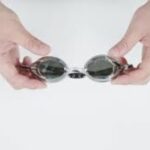10 Best Swim Googles with Excellent Clear Vision
If you’ve ever shown up to the pool with your so-called best swim googles only to realize they leak worse than a politician’s email account, you know the struggle is real.
Nothing ruins a swim faster than fog, drips, and lenses that pinch your face so tight you come out looking like you’ve been in a raccoon wrestling match. But don’t worry, I’ve done the legwork, the pool tests, and the occasional goggle-related tantrum so you don’t have to.
What Are the Best Swim Googles?
The best swim googles are those that fit your unique face shape snugly without leaking, provide the right lens tint for your environment, resist fogging, and stay comfortable during long sessions.
For pool training, the best swimming goggles often have soft silicone gaskets, clear or lightly tinted lenses, and adjustable nose bridges. For outdoor pools or open water, triathlon goggles or polarized mirrored lenses are often superior, as they cut glare and improve sighting.
Competitive swimmers lean toward the best swim goggles for competition, which are low-profile, hydrodynamic, and minimize drag. Kids need the best children’s goggles, with flexible frames, anti-fog coatings, and an easy strap system.
So, the best swim googles really depend on whether you’re training indoors, racing outdoors, or just teaching your kid to blow bubbles. One size does not fit all.
10 Best Swim Goggles
Selecting the best swim goggles requires more than simply choosing a recognizable brand. Performance in water is dictated by lens quality, gasket design, strap configuration, and durability under repeated use.
Each model below is evaluated for comfort, visibility, anti-fog reliability, and suitability for specific environments, ensuring you can align your choice with your swimming goals.
1. Speedo Unisex-Adult Swim Goggle Biofuse 2.0
Designed with Speedo’s Biofuse technology, this goggle emphasizes soft cushioning for extended comfort. The frame adapts slightly to facial contours, enhancing leak resistance while maintaining stability. Lenses offer consistent clarity suitable for both indoor and outdoor pool training.
Pros
- Flexible frame for adaptive fit
- Reliable anti-fog coating for short sessions
- Soft gaskets reduce pressure marks
- Wide peripheral view
- Durable strap construction
Cons
- Price point
2. ZIONOR G1 Polarized Swimming Goggles
ZIONOR G1 Polarized lenses significantly reduce glare, making this model suitable for outdoor pools and open water. The design prioritizes eye protection with 100% UV coverage, while maintaining comfort through its ergonomic gaskets. Users appreciate stable positioning during dynamic strokes.
Pros
- Polarized lenses for glare reduction
- Strong UV protection
- Wide viewing angle
- Comfortable silicone seals
- Adjustable straps for a secure fit
Cons
- Bulkier frame compared to racing goggles
3. Frogglez Masterz Swim Goggles for Adults & Teens
Engineered with a distinctive strap system, these goggles eliminate hair-pulling issues common with traditional silicone bands. The mirrored lenses provide glare protection for bright pool or outdoor conditions. Anti-fog functionality remains adequate for moderate swim durations.
Pros
- Unique fabric strap prevents hair pulling
- Comfortable for long-term wear
- Effective mirrored lens for sunlight
- Leak-resistant design
- Suitable for teens and adults alike
Cons
- Less hydrodynamic for competition
- Limited adjustability for very small faces
4. AqtivAqua Swimming Goggles, DX Wide View
Emphasizing panoramic visibility, this model is tailored for recreational and fitness swimming where awareness is critical. The soft double-gasket construction offers improved sealing without excessive pressure. Anti-fog treatment provides reasonable clarity for extended pool sessions.
Pros
- Wide-angle vision for lane awareness
- Double gasket enhances leak resistance
- Comfortable strap system
- Suitable for both genders and varied face shapes
- Effective UV protection
Cons
- Anti-fog coating degrades with heavy use
5. Aegend Swim Goggles
Marketed for value, this set provides two pairs with anti-fog and no-leak claims, making it appealing for families or frequent swimmers. Comfort is supported by flexible silicone seals that adapt well to diverse facial structures. Visibility is adequate for recreational training.
Pros
- Affordable two-pack offering
- Flexible gasket adapts to faces
- Good basic UV protection
- Clear lenses for indoor pools
- Lightweight design
Cons
- Anti-fog performance is limited
6. ARENA Unisex Adult Cobra Tri Swimming Goggles
Developed for triathlon and fitness swimmers, this model combines hydrodynamic shaping with a wide vision profile. Swipe anti-fog technology extends lens clarity significantly longer than standard coatings. The mirrored lenses further enhance outdoor performance under strong sunlight.
Pros
- Swipe anti-fog lasts longer
- Wide field of vision
- Hydrodynamic for competition use
- Premium gasket sealing
- Suitable for triathlon training and racing
Cons
- Higher price point
7. Otionus Swim Goggles, Polarized Adult
Featuring polarized lenses, these goggles excel in outdoor pools and bright environments. The bungee-style strap is designed to avoid tangling and pulling hair, increasing comfort. Frame construction balances between recreational comfort and competitive function.
Pros
- Polarized lenses reduce glare
- UV protection for outdoor use
- Bungee strap prevents hair pulling
- Comfortable long-wear fit
- Leak-resistant seal
Cons
- Limited availability of spare parts
- Slightly bulkier than low-profile racing designs
8. Speedo Women’s Mirrored Vanquisher 2.0
Engineered specifically for women, this model offers a narrower profile for smaller facial structures. The mirrored lenses provide sun protection, while low-profile construction enhances speed and hydrodynamics. Anti-fog performance is adequate, though requires regular care. You can also easily change the nose piece anytime the need arises.
Pros
- Female-specific fit with narrower design
- Hydrodynamic profile for competition
- Effective mirrored lens for glare
- Secure strap and nose bridge adjustments
- Wide availability and proven design
Cons
- Can leave pressure marks after long sessions
9. TYR Blackops Swimming Goggles
This model balances compact hydrodynamic shape with comfort for racing and training alike. The low-profile lenses sit close to the eyes, reducing drag and improving speed. Durable construction ensures consistent performance in high-frequency training sessions.
Pros
- Streamlined racing profile
- Reliable leak-proof design
- Strong anti-fog coating
- Comfortable for shorter intense swims
- Trusted competitive brand
Cons
- Limited peripheral vision
- May feel tight on wider faces
10. OMID Swim Goggles, P2 Polarized
These goggles emphasize outdoor clarity with polarized lenses designed for bright sunlight conditions. Anti-fog treatment performs adequately, and the silicone seals conform well to adult facial contours. Frame construction is balanced for both recreational and fitness use.
Pros
- Polarized for outdoor swimming
- Wide viewing field
- Comfortable silicone gaskets
- Effective UV protection
- Adjustable strap for different head sizes
Cons
- Anti-fog wears with heavy usage
Fit and Leak-Proofing: Why Most Goggles Fail Before the First Lap
The number one complaint swimmers voice is leaking. Water sneaks in through tiny gaps because the gasket doesn’t match your facial structure. Here’s the fix:
- Suction Test: Press the goggles against your eyes without using the strap. If they hold for a few seconds, that’s your seal.
- Nose Bridge Matters: Adjustable or interchangeable bridges allow you to fine-tune fit. Fixed bridges often fit only a narrow set of faces.
- Strap Geometry: Don’t crank straps too tight: it distorts the gasket and causes leaks. Straps should angle slightly upward, sitting above the ears, not horizontal.
A wide silicone gasket works better for training, while slim racing cups are leak-resistant if sized properly but can dig into the skin.
RELATED: How to choose swimming goggles
Anti-Fogging: The Eternal Battle with Cloudy Vision
Even the best swim googles will fog after a while. Anti-fog coatings wear down quickly from chlorine, touching the inside lens, or improper cleaning.
- Factory Anti-Fog: Works well at first but rarely lasts beyond a dozen sessions.
- DIY Fix: Rinse with pool water before swimming, avoid touching the lens interior, and store them dry in a case.
- Re-coating Sprays: Anti-fog sprays and drops are inexpensive and effective, provided you apply them properly.
- Natural Methods: Some swimmers swear by baby shampoo diluted in water as a homemade anti-fog solution.
Pro tip: Never rub lenses with your towel. That’s the fastest way to strip anti-fog coatings.
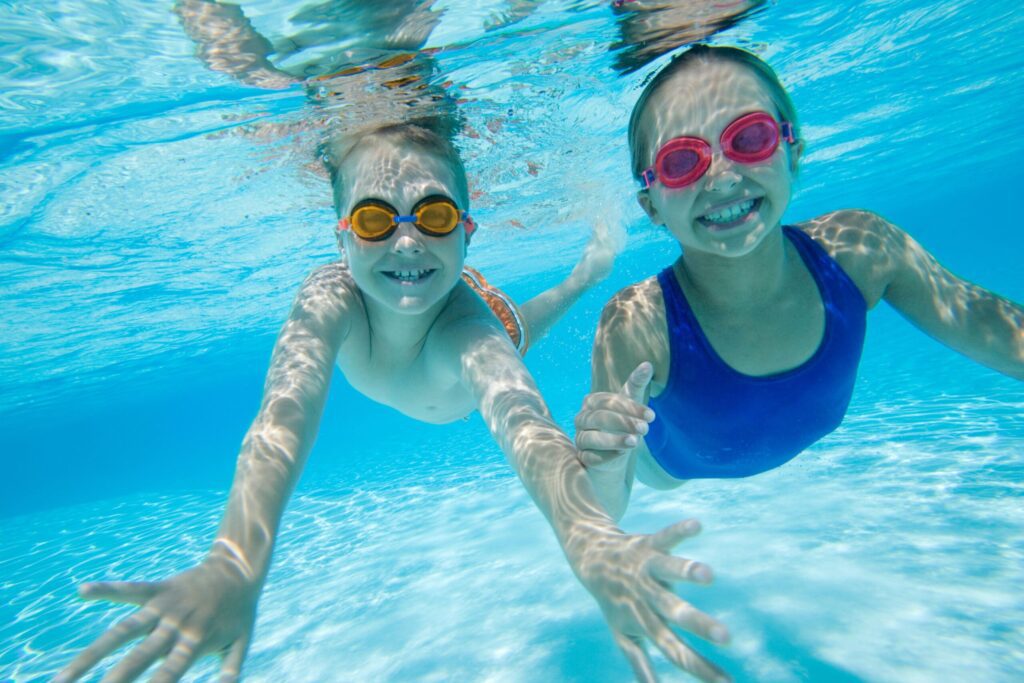
Lens Choice: Indoor, Outdoor, and Open Water Differences
Lens tint is one of the most misunderstood factors. Many swimmers end up with mirrored lenses indoors and feel like they’re swimming in a cave.
- Indoor Pools: Clear, light smoke, or lightly tinted lenses give the best visibility.
- Outdoor Pools: Mirrored or polarized lenses help reduce glare.
- Open Water & Triathlon: Wide lenses with polarization are ideal for sighting buoys in bright sun. Photochromic lenses, which adjust to light, can be worth the investment for serious athletes.
In competitive scenarios, best swim goggles for competition often feature mirrored lenses for glare reduction and intimidation factor, but remember, comfort beats intimidation every time.
Comfort Over Long Sessions: No More Raccoon Eyes
The difference between a good training session and a headache often comes down to comfort.
- Soft Gaskets: Silicone gaskets spread pressure better than hard plastic frames.
- Nose Fit: Too tight, and you’ll feel soreness on the bridge. Too loose, and you’ll leak.
- Low-Profile Race Goggles vs. Training Goggles: Race goggles are streamlined but less forgiving for daily sessions. Training goggles are bulkier but designed for extended wear.
If you often come out with deep goggle marks, look for wider cushioned seals or even mask-style swim goggles.
Field of View: Seeing Beyond the Lane Line
Peripheral vision matters more than you think. Competitive swimmers need to spot walls for turns, while open-water athletes must sight buoys.
- Curved Lenses: Increase field of view but can distort slightly if poorly designed.
- Flat Lenses: Offer sharper clarity but reduce peripheral awareness.
- Wide-Frame Goggles: Preferred in triathlons and open-water races where awareness is safety-critical.
When testing, check if you can see lane ropes without turning your head. That’s the sign of a wide-view goggle.
Durability and Replacement
Straps snap. Nose bridges break. Lenses scratch. Even the best swim googles will eventually wear out, but some brands make replacement parts available.
- Replaceable Straps & Bridges: Extend the life of your goggles significantly.
- Protective Cases: Storing goggles loose in a bag leads to scratches and crushed gaskets.
- Signs of Retirement: Cracked gaskets, persistent leaks, or fogging that won’t respond to treatments mean it’s time for new goggles.
Prescription Swim Goggles: Solving the Vision Problem
|
|
|
|
For nearsighted swimmers, prescription goggles are a game-changer.
- Off-the-Shelf Diopters: Affordable, come in standard increments.
- Custom Prescription: More expensive, precise to your vision.
- Trade-Off: Custom lenses may add bulk, but clarity is unmatched.
If you’re using diopter goggles, remember your swimming IPD (interpupillary distance) may affect comfort.
Skin Sensitivities and Allergies
Not everyone’s skin reacts well to gaskets.
- Hypoallergenic Silicone: Most modern goggles use this.
- Foam Gaskets: Softer but less durable and harder to clean.
Tip: Always rinse with fresh water after use to prevent chlorine irritation.
Sizing for Kids and Smaller Faces
|
|
|
|
Buying the best children’s goggles is its own challenge. Kids have smaller, softer facial structures, so adult goggles almost never seal.
- Flexible Frames: Adjust more easily for growing kids.
- Anti-Fog & UV Protection: Important for outdoor swim lessons.
- Quick-Release Straps: Prevent hair-pulling tantrums on deck.
Triathlon and Open Water: Special Considerations
Triathlon goggles need to check multiple boxes: quick to adjust, wide visibility, and comfort under a cap.
- Dawn Start Conditions: Photochromic lenses or lightly tinted mirrored lenses help.
- Quick Transitions: Goggles with quick-release buckles save precious seconds.
- Anti-Fog Ritual: Apply anti-fog the night before, rinse once in the morning.
Care, Hygiene, and Longevity
A surprising number of swimmers shorten goggle life with poor maintenance.
- Rinse with non-chlorinated water after each swim.
- Never leave goggles wet in a closed bag. Mold grows faster than you’d expect.
- Dry them gently in the open air, never in direct sun.
- Keep in a ventilated case to prevent scratches.
Most goggles last 3–6 months of daily training before fog or gasket wear sets in.
Avoiding Counterfeits and Overpaying
The market is flooded with knockoffs. The best swim googles won’t help you if you buy a fake.
- Signs of Authenticity: Packaging with warranty details, brand stamps, and instruction leaflets.
- Too Cheap to Be Real: If the price is half of everywhere else, it’s likely fake.
- Warranty Policies: Trusted brands often offer 6–12 month guarantees.
FAQs on the Best Swim Googles
- Why do my goggles leak? Usually a poor fit or strap tension issue.
- How do I stop fogging? Proper rinsing, anti-fog drops, and avoiding lens contact.
- What’s better: Swedish goggles or cushioned ones? Swedish are great for racing, cushioned for training.
- How often should I replace goggles? Every 3–6 months for regular swimmers.
- Can I use the same goggles for pool and open water? Possible, but lens tint should match environment.
The Bottom Line on the Best Swim Googles
Choosing the best swim googles isn’t about brand loyalty or the flashiest mirror coating. It’s about a secure fit, fog resistance, the right lens for your environment, and durability that lasts through your training sessions.
Whether you need the best swimming goggles for everyday training, best swim goggles for competition, triathlon goggles for open water, or the best children’s goggles for young swimmers, the goal remains the same: clarity, comfort, and confidence in the water.
Get those right, and you’ll never again waste half your session fiddling with leaky lenses instead of racking up laps.
